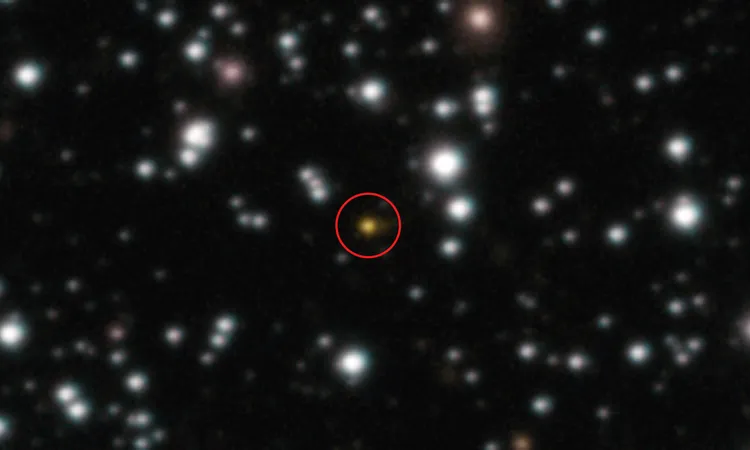
Astronomers Shocked by Mysterious Gamma-Ray Burst That Keeps Coming Back!
2025-09-13
Author: Ming
In a stunning revelation, astronomers have captured an extraordinary gamma-ray burst (GRB) that seemingly refuses to fade away! This cosmic event, named GRB 250702B, emitted powerful signals that echoed back for an astonishing duration of nearly a full day — a stark contrast to the typical bursts that usually last just a few seconds.
A Cosmic Enigma: The Repeating Burst
GRB 250702B has left scientists scratching their heads as it fired off three separate echoes over several hours, accompanied by soft X-ray bursts that kicked in even earlier. This unusual behavior is raising eyebrows, given that conventional GRBs are known for their singular, cataclysmic nature — never repeating themselves.
Groundbreaking Research and Collaboration
Lead researchers Antonio Martin-Carrillo from University College Dublin and Andrew J. Levan from Radboud University are spearheading this fascinating study. Their teams harnessed rapid-response alerts from NASA's Fermi satellite and China's Einstein Probe, alongside detailed follow-up observations using the Very Large Telescope (VLT) and the Hubble Space Telescope.
What Makes GRB 250702B So Unique?
Unlike any GRB observed in the last half-century, this burst could be 100 to 1,000 times longer than usual! Fascinatingly, the bursts appeared in a precise pattern, suggesting a possible repeating mechanism rather than random occurrences.
Uncovering the Source: A Journey Beyond Our Galaxy
Initially believed to be within our own Milky Way, the VLT’s observations radically shifted this perspective. The HAWK-I camera detected a remarkably red point of light that faded over time, while Hubble pinpointed a distant galaxy several billion light-years away as the probable source of this cosmic phenomenon.
Theories Abound: Is a Black Hole Involved?
One compelling theory posits that GRB 250702B could be connected to a jetted tidal disruption event, where a black hole actively tears apart a nearby star. Alternatively, researchers speculate that a compact white dwarf star might be interacting with an intermediate-mass black hole, leading to bursts of activity aligned with a predictable orbital pattern.
A New Type of GRB?
While some traditional GRB hypotheses, such as a collapsing massive star, haven’t been ruled out, they don’t adequately explain the burst's prolonged activity over hours. Unique patterns of diminishing infrared and radio emissions also lend credence to the idea of a disruptive yet focused cosmic event at play.
Eyes on the Monitor: Will a Supernova Emerge?
As astronomers continue observing this intriguing source, they’re on the lookout for potential signs of a supernova. If one is indeed involved, it could light up the night sky weeks after the collapse, but heavy interstellar dust could complicate detection efforts.
Ultimately, this groundbreaking study not only enhances our understanding of gamma-ray bursts but also challenges existing paradigms about these enigmatic events.
As Martin-Carrillo aptly stated, 'We are still not sure what produced this, but with this research, we have made a significant step towards unraveling this extremely unusual and exciting object.'



 Brasil (PT)
Brasil (PT)
 Canada (EN)
Canada (EN)
 Chile (ES)
Chile (ES)
 Česko (CS)
Česko (CS)
 대한민국 (KO)
대한민국 (KO)
 España (ES)
España (ES)
 France (FR)
France (FR)
 Hong Kong (EN)
Hong Kong (EN)
 Italia (IT)
Italia (IT)
 日本 (JA)
日本 (JA)
 Magyarország (HU)
Magyarország (HU)
 Norge (NO)
Norge (NO)
 Polska (PL)
Polska (PL)
 Schweiz (DE)
Schweiz (DE)
 Singapore (EN)
Singapore (EN)
 Sverige (SV)
Sverige (SV)
 Suomi (FI)
Suomi (FI)
 Türkiye (TR)
Türkiye (TR)
 الإمارات العربية المتحدة (AR)
الإمارات العربية المتحدة (AR)